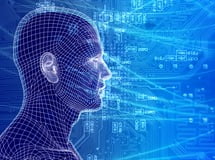A CONVENTIONAL
object recognition system, when trying to discern a particular type of object
in a digital image, will generally begin by looking for the object’s salient
features. A system built to recognize faces, for instance, might look for
things resembling eyes, noses and mouths and then determine whether they have
the right spatial relationships with each other.
The design of
such systems, however, usually requires human intuition: A programmer decides
which parts of the objects are the right ones to key in on. That means that for
each new object added to the system’s repertoire, the programmer has to start
from scratch, determining which of the object’s parts are the most important.
It also means
that a system designed to recognize millions of different types of objects
would become unmanageably large. Each object would have its own, unique set of
three or four parts, but the parts would look different from different
perspectives, and cataloguing all those perspectives would take an enormous
amount of computer memory.
In a paper that
they’ll present at the Institute of Electrical and Electronics Engineers’
Conference on Computer Vision and Pattern Recognition in June, postdoc Long
(Leo) Zhu and Professors Bill Freeman and Antonio Torralba, all of MIT’s
Computer Science and Artificial Intelligence Laboratory, and Yuanhao Chen and
Alan Yuille of UCLA describe an approach that solves both of these problems at
once.
Like most
object-recognition systems, their system learns to recognize new objects by
being ‘trained’ with digital images of labeled objects. But it doesn’t need to
know in advance which of the objects’ features it should look for.
For each labeled
object, it first identifies the smallest features it can – often just short
line segments. Then it looks for instances in which these low-level features
are connected to each other, forming slightly more sophisticated shapes. Then
it looks for instances in which these more sophisticated shapes are connected
to each other, and so on, until it’s assembled a hierarchical catalogue of
increasingly complex parts whose top layer is a model of the whole object.
Economies of
scale
Once the system
has assembled its catalogue from the bottom up, it goes through it from the top
down, winnowing out all the redundancies. In the parts catalogue for an object
seen in profile, for instance, the second layer from the top might include two
different representations of the object’s rear: One could include the rear,
including a rear leg, strut or wheel and the lower part of the object; the
other might include the rear and both rear legs or rear wheels.
But it could turn
out that in the vast majority of cases where the system identifies one of these
“parts,” it identifies the other as well. So it will simply cut one
of them out of its hierarchy.
Even though the
hierarchical approach adds new layers of information about digitally depicted
objects, it ends up saving memory because different objects can share parts.
That is, at several different layers, the parts catalogues for a horse and a
deer could end up having shapes in common; to some extent, the same holds true
for SUVs, vans and cars.
Wherever a shape
is shared between two or more catalogues, the system needs to store it only
once. In their new paper, the researchers show that, as they add the ability to
recognize more objects to their system, the average number of parts per object
steadily declines.
Although the
researchers’ work promises more efficient use of computer memory and
programmers’ time, “it is far more important than just a better way to do
object recognition,” says Tai Sing Lee, an associate professor of computer
science at Carnegie Mellon University.
“This work
is important partly because I feel it speaks to a couple scientific mysteries
in the brain.”
Lee points out
that visual processing in humans seems to involve five to seven distinct brain
regions, but no one is quite sure what they do. The researchers’ new object
recognition system doesn’t specify the number of layers in each hierarchical
model; the system simply assembles as many layers as it needs.
“What kind
of stunned me is that [the] system typically learns five to seven layers,”
Lee says.
That, he says,
suggests that it may perform the same types of visual processing that takes
place in the brain. In their paper, the MIT and UCLA researchers report that,
in tests, their system performed as well as existing object-recognition
systems. But that’s still nowhere near as well as the human brain.
Lee says that the
researchers’ system currently focuses chiefly on detecting the edges of
two-dimensional depictions of objects; to approach the performance of the human
brain, it will have to incorporate a lot of additional information about
surface textures and three-dimensional contours, as the brain does.
From the perspective
of video surveillance, more efficient and more accurate object recognition will
mean faster searches, more exacting event recording and more intelligent alarm
activation.








